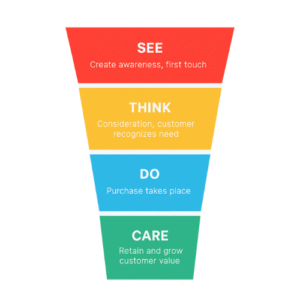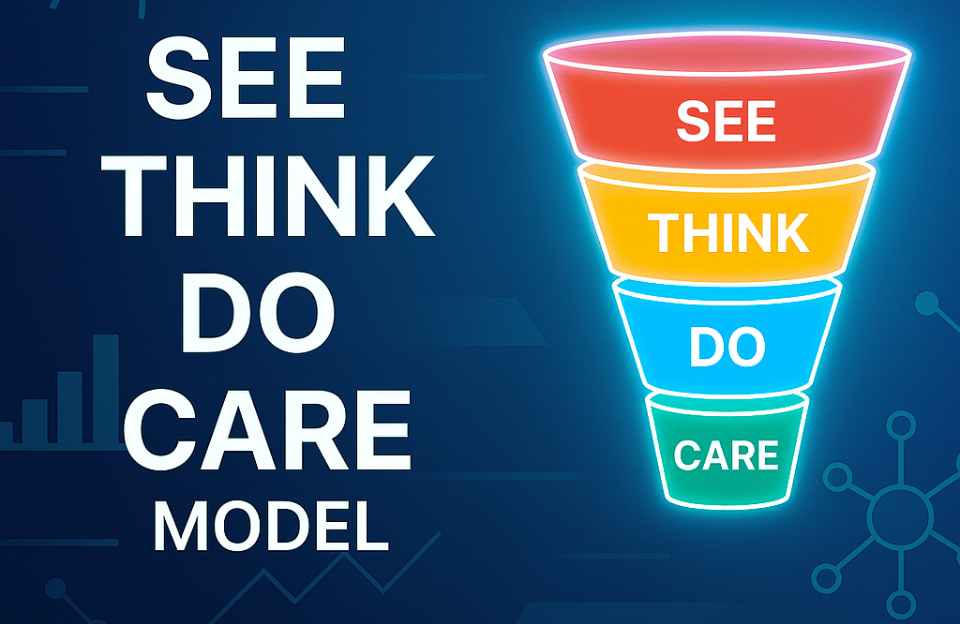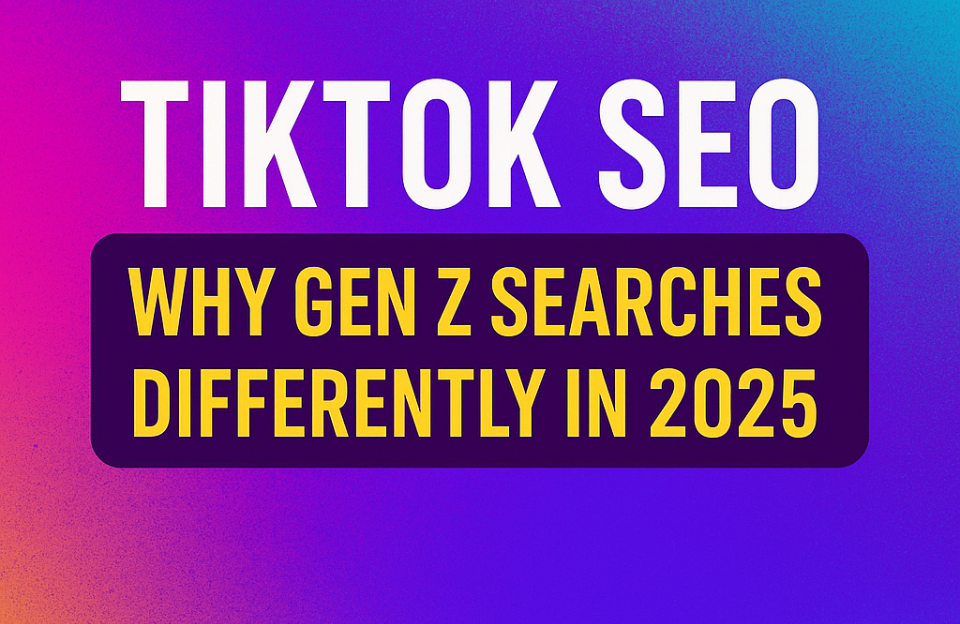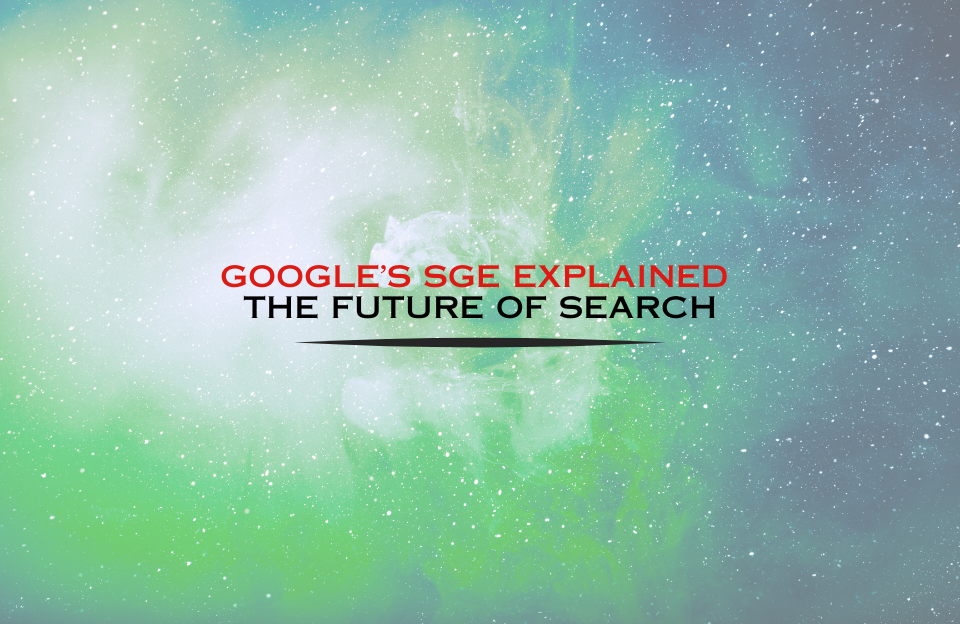The See Think Do Care (STDC) model is a strategic framework that helps you create the right marketing message at the right time based on where your audience is in their journey. Originally developed by Google’s Avinash Kaushik, this model has become a favorite among performance marketers, brand strategists, and content creators.
Instead of pushing the same ad or message everywhere, STDC helps you tailor your approach. It aligns your content, channels, and advertising efforts with real user intent.
What Is the See Think Do Care Model?

| Stage | Intent | Content Focus | Typical Channels |
|---|---|---|---|
| See | Broad awareness | Inspirational, entertaining | Organic & paid social, YouTube, Shorts |
| Think | Consideration | Informative, educational | SEO, retargeting, email, YouTube |
| Do | Action | Persuasive, conversion-focused | Shopping ads, SEA, paid social, email |
| Care | Loyalty | Value, engagement, support | Email automation, loyalty programs, communities |
See Stage: Building Awareness and Reach
Audience intent: Unaware of need or solution
Best channels: Instagram Reels, TikTok, YouTube Shorts, awareness ads
Content types: Lifestyle videos, challenges, behind-the-scenes, branded entertainment
Example – Gymshark: A TikTok campaign shows micro-influencers sharing their morning workout routines while wearing Gymshark gear. The videos highlight a fitness lifestyle, not products, and are distributed both organically and through paid ads.
Example – Prime: Prime releases a YouTube Short featuring Logan Paul surprising fans with ice baths and hydration challenges at a music festival. It’s fun, high-energy, and spreads brand awareness with no CTA.
Think Stage: Building Trust and Relevance
Audience intent: Exploring options
Best channels: SEO blogs, YouTube tutorials, email, Pinterest, retargeting ads
Content types: Comparison guides, how-to videos, case studies, lead magnets
Example – Gymshark: A blog article titled “Which Gymshark Leggings Fit Your Training Style?” breaks down fabric types, support levels, and reviews. A Pinterest lead ad offers a downloadable workout planner in exchange for an email address.
Example – Prime: Prime shares a YouTube video called “When Should You Actually Drink an Electrolyte Drink?” comparing hydration needs for workouts, travel, and gaming. The video educates while reinforcing Prime’s role as a solution, without pushing for a sale.
Do Stage: Driving Action and Conversion
Audience intent: Ready to act
Best channels: Google Ads (Search & Shopping), retargeting, email, TikTok Spark Ads
Content types: Product pages, offers, reviews, bundles, urgency-based ads
Example – Gymshark: A user who browsed leggings receives a retargeting ad carousel featuring the exact items viewed, now with a 10% discount. The product page includes reviews, stock alerts, and fast shipping info.
Example – Prime: On Instagram, Prime runs a time-limited Stories ad for its “Limited Edition Meta Moon” flavor. The ad features real customer reviews, a swipe-up link to purchase, and a countdown timer to create urgency.
Care Stage: Loyalty and Relationship Building
Audience intent: Owns product, open to more value
Best channels: Email automations, customer support, mobile app, online community
Content types: How-to guides, loyalty programs, UGC highlights, exclusive drops
Example – Gymshark: After buying, the customer receives a 3-part email series with style tips, a playlist for training, and access to the Conditioning Club app with workouts, challenges, and early access to product drops.
Example – Prime: Prime emails customers with a VIP link to try a new flavor 48 hours before public launch. On social media, the brand reposts hydration selfies and community clips, reinforcing inclusion and loyalty.
Why This Model Works
- You align marketing with real audience intent
Each stage of the STDC framework corresponds with a different mindset and need. By aligning your messaging, creatives, and channels to that mindset, you make your campaigns more relevant and effective. - You avoid wasting budget on one-size-fits-all messaging
Instead of broadcasting the same message to everyone, you segment by intent. This prevents wasted impressions and improves ROI. - You integrate paid ads and organic content strategically
Organic content works best in See and Think. Paid media converts best in Do and Care. Together, they provide a seamless funnel. - You increase customer lifetime value through follow-up
The Care stage helps you turn one-time buyers into loyal advocates, increasing profitability without increasing acquisition costs. - You turn one-time buyers into loyal brand advocates
Loyalty campaigns, support content, and exclusive perks build stronger bonds and generate word-of-mouth promotion.
How Gymshark Leveraged the See Think Do Care Model
See
Gymshark began by targeting fitness enthusiasts on social media with motivational and lifestyle content, rather than pushing products. They collaborated with fitness influencers like Nikki Blackketter and Steve Cook to create awareness and build credibility.
Think
Their content evolved into workout guides, transformation stories, and fitness challenges that addressed the audience’s fitness goals. This gave prospects a reason to engage without immediately purchasing—ideal for the Think phase.
Do
Flash sales, limited drops, and product releases were announced through countdowns and influencer hype. Paid social ads targeted users who had previously engaged or visited the website, converting warm traffic with urgency.
Care
After purchase, customers received branded packaging, handwritten notes, and personalized follow-ups. Gymshark also invested in building a strong online community—encouraging user-generated content and repeat engagement. This turned buyers into fans.
Common Mistakes to Avoid
- Skipping the See phase entirely
Without awareness, you have no funnel. Don’t expect conversions from users who don’t know or trust you yet. - Hard-selling too early
In the Think stage, people want info, not pressure. Pushy ads here can hurt trust and long-term results. - One-size-fits-all messaging
Every phase needs unique messaging, visuals, and CTAs tailored to the user’s mindset. - Neglecting the Care stage
Post-purchase strategies are often ignored, yet they’re key to increasing lifetime value and driving referrals. - Lack of measurement per stage
Without tracking by funnel phase, you can’t improve or scale what works. Use tagging and analytics tools wisely.
Conclusion
The See Think Do Care model helps marketers move from random content creation to strategic, intent-driven messaging. By aligning what you say and where you say it to each stage of the customer journey, you increase conversions, boost retention, and build stronger brands.




